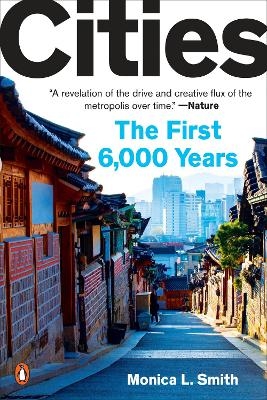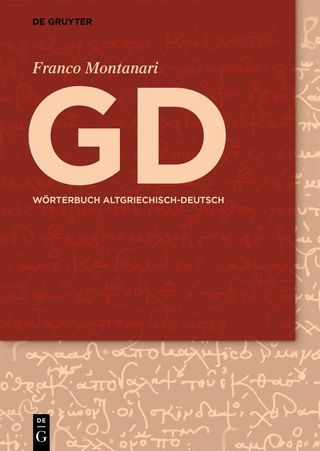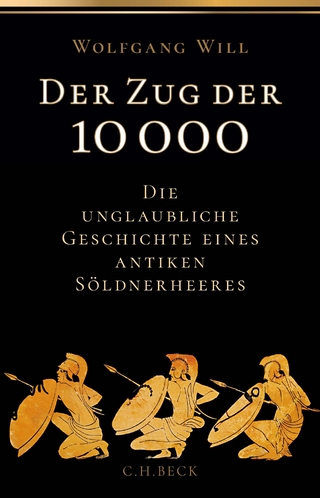
Cities
Penguin USA (Verlag)
978-0-7352-2368-4 (ISBN)
A sweeping history of cities through the millennia--from Mesopotamia to Manhattan--and how they have propelled Homo sapiens to dominance.
Six thousand years ago, there were no cities on the planet. Today, more than half of the world's population lives in urban areas, and that number is growing. Weaving together archeology, history, and contemporary observations, Monica Smith explains the rise of the first urban developments and their connection to our own. She takes readers on a journey through the ancient world of Tell Brak in modern-day Syria; Teotihuacan and Tenochtitlan in Mexico; her own digs in India; as well as the more well-known Pompeii, Rome, and Athens. Along the way, she presents the unique properties that made cities singularly responsible for the flowering of humankind: the development of networked infrastructure, the rise of an entrepreneurial middle class, and the culture of consumption that results in everything from take-out food to the tell-tale secrets of trash.
Cities is an impassioned and learned account full of fascinating details of daily life in ancient urban centers, using archaeological perspectives to show that the aspects of cities we find most irresistible (and the most annoying) have been with us since the very beginnings of urbanism itself. She also proves the rise of cities was hardly inevitable, yet it was crucial to the eventual global dominance of our species--and that cities are here to stay.
Monica L. Smith is professor of anthropology and professor in the Institute of the Environment and Sustainability at the University of California, Los Angeles. She holds the Navin and Pratima Doshi Chair in Indian Studies and serves as the director of the South Asian Archaeology Laboratory in the Cotsen Institute of Archaeology. Her archaeological expertise includes fieldwork in Egypt, England, India, Italy, Tunisia, Bangladesh, Turkey, and Madagascar, supported by highly competitive research grants from the National Science Foundation, the National Endowment for the Humanities, and the National Geographic Society.
1 Why Cities? As an archaeologist, my favorite place in Rome is not the Colosseum or the Forum. It's the ancient trash dump of Monte Testaccio. Right in the middle of the city, it is a giant mound of broken pottery where the ancient Romans threw away the containers used to ship wine and olive oil all around the Mediterranean. Each of those vessels was about half the height of a person and made of coarse clay that would have roughed up a stevedore's hands. Their odd shape of two handles and a pointy base made them good for packing into a ship's hold or standing upright on a sandy shoreline but very inconvenient for much else. After a cargo of them arrived at its destination on the bustling shores of the Tiber at the very heart of the Roman world, a few were reused and a few were recycled. Mostly, people poured out the contents and threw the containers away. Over the centuries, the pile of discards grew, with the result that one of the famous hills of Rome is actually not a hill at all but a human construction-a landfill, essentially. Today Monte Testaccio is topped by trendy nightclubs and has been endlessly mined for construction, but there are still the remains of twenty-five million ancient containers poking up from the vegetation of the hillside. Now consider a very different metropolis. My favorite part of Tokyo? The backside of the Tsukiji fish market, the part that tourists don't visit. Tsukiji is enormous, and the passageways are crowded with plastic buckets and barrels teeming with every kind of creature that you can imagine from the briny deep. Crabs attempt to crawl their way out of baskets, little fish are piled up in ice buckets, and great slabs of tuna glisten under the klieg lights. The market is open to everyone, with chefs and restaurant owners jostling with homemakers for a clearer view of the day's catch. It's a world without friendly chitchat, punctuated by the dangerous darting movements of souped-up forklifts that dodge their way in and out of the building and heap up their discards out back. Behind the market is an enormous dump of plastic-foam shipping boxes used to transport the globally sourced tuna, squid, and shrimp from each morning's auctions. The pile of containers is taller than a two-story building and so large that it is continually cleared by bulldozer. Some of the cartons are trampled and broken in the process, with bits and pieces that spill farther into the passageway. In between the endless runs of machinery, merchants and their helpers come to pick through the heaps of box fragments. Sorting through the pile to find ones that aren't too broken, they carry them off to repack with fish or whatever else they're selling. Ancient Rome and modern Tokyo are literally a world apart, but if we stand back and look at them as cities, they have identical characteristics. In addition to markets and trash, there are multistory buildings, long streets, sewer pipes, water mains, public squares, and a "downtown" zone of financial institutions and government offices. There are a thousand varieties of sounds and smells, competing with the weather and daylight that frame the skyline of the built environment. There are crowds of people-rich, poor, young, old, female, male, gay, straight, trans, abled, disabled, employed, students, jobless, residents, and visitors. Production and consumption opportunities are scaled up in cities to provide not only more things but also more things per person, a completely ironic abundance given that urban residences tend to be much smaller than their rural counterparts. In the midst of so much abundance, the only solution is to cycle through possessions faster, turning everything into trash. It's the act of discard that provides the most telling evidence of urban activity, whether it's a broken potsherd from two thousand years ago or a fragment of a plastic crate that was shattered this morning. Once you start to look for the concentrated detritus of your own urban
| Erscheinungsdatum | 08.04.2020 |
|---|---|
| Zusatzinfo | B&W IMAGES THROUGHOUT |
| Sprache | englisch |
| Maße | 139 x 210 mm |
| Gewicht | 272 g |
| Themenwelt | Sachbuch/Ratgeber ► Geschichte / Politik ► Allgemeines / Lexika |
| Geisteswissenschaften ► Archäologie | |
| Geisteswissenschaften ► Geschichte ► Allgemeines / Lexika | |
| Geschichte ► Allgemeine Geschichte ► Altertum / Antike | |
| Geschichte ► Teilgebiete der Geschichte ► Kulturgeschichte | |
| Naturwissenschaften ► Geowissenschaften ► Geografie / Kartografie | |
| Schlagworte | Ancient Egypt • Ancient Greek • anthropologist • Anthropology • archaeology • archaeology books • Archeology • Assyrian • books about cities • Cities • Civilization • clay pots • consumption • Garbage • gifts for history buffs • Historical books • History • History books • history buff gifts • history gifts • history of cities • history teacher gifts • Homo sapiens • Infrastructure • Innovation • Mesopotamia • Metropolis • middle class • monica l. smith • monica smith • Pompeii • Pottery • Sociology • sociology books • Stonehenge • Trash • World History |
| ISBN-10 | 0-7352-2368-8 / 0735223688 |
| ISBN-13 | 978-0-7352-2368-4 / 9780735223684 |
| Zustand | Neuware |
| Haben Sie eine Frage zum Produkt? |
aus dem Bereich


